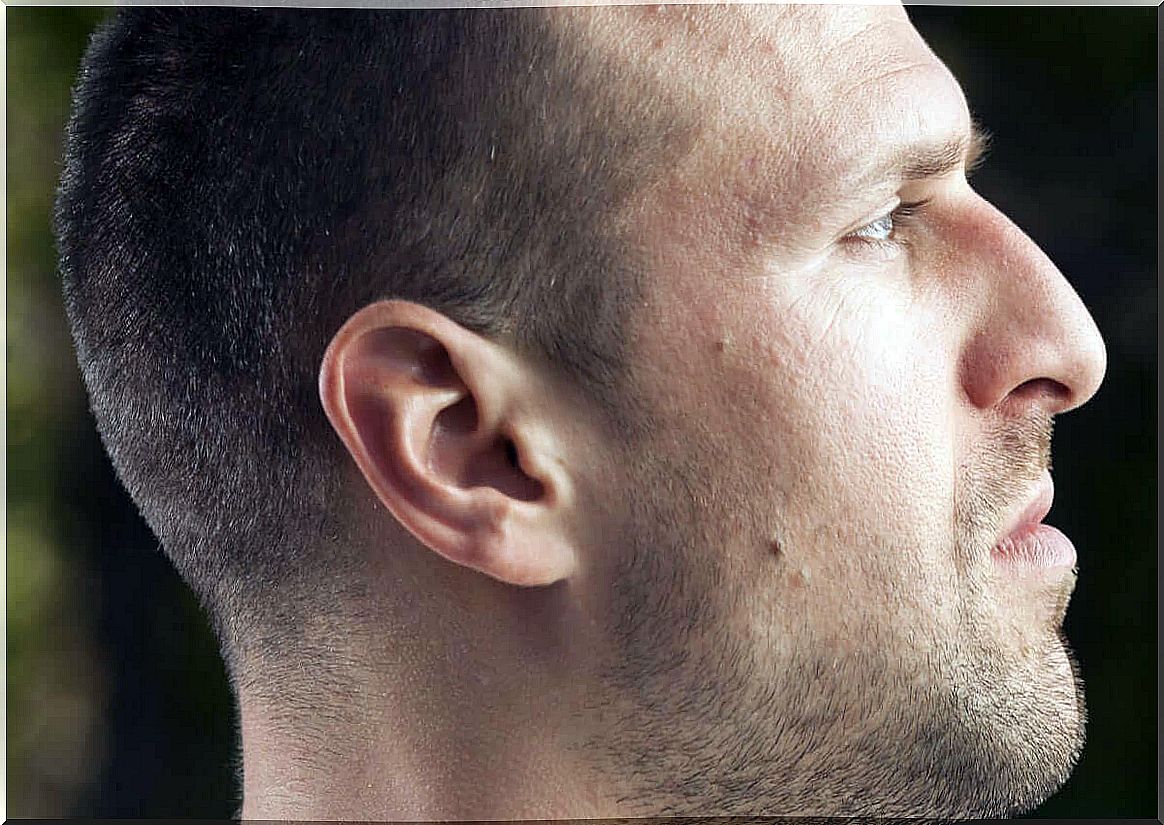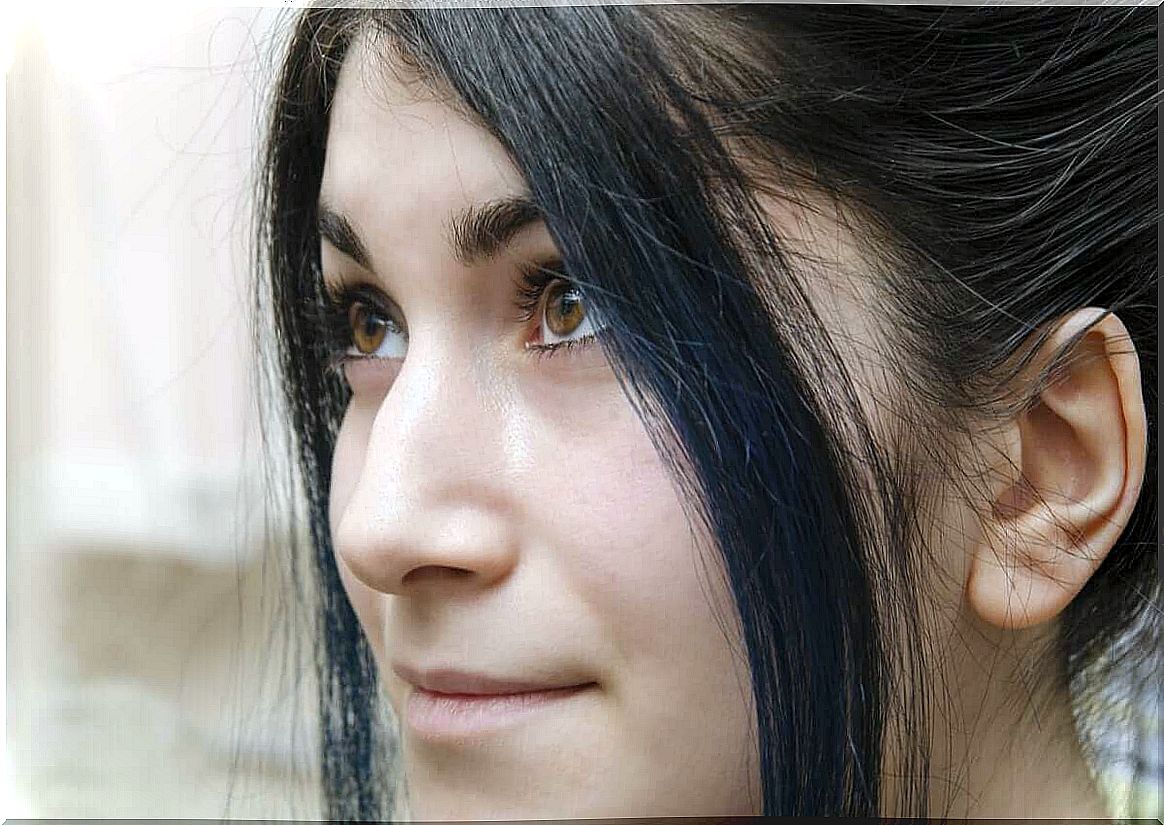Different Nose Shapes: What Shape Nose Do You Have?

There are many different shapes of the nose. Each of them has its own characteristics and advantages. Do you know what kind of nose shapes exist? They depend for the most part on geographical and cultural implications. Continue reading to learn more!
Different nose shapes
Like other facial features, the nose is different for each person and is associated with different characteristics. However, we can see that they balance the face of everyone.
The structure of the nose is very simple. It includes nostrils or nasal cavities that allow air to pass through them, two side walls covering the nasal cavity, a septum, and a nasal end. These elements define the shape of the nose.
There can be a lot of differences between the noses. The noses vary in shape, height, width and nostrils. This allows them to be classified into larger groups according to common shapes.

Flat nose
A flat nose means that the bridge of the nose is short and depressed. The nostrils expand to the sides. The nasal tip is also flat.
The nose looks flat on the side, meaning it doesn’t protrude much from the face. A flat nose is common among yellow and dark-skinned people. The nose of Asian traits is not as wide as that of people with African traits.
Nose pointing upwards
Unlike a flat nose, the upwardly directed nose has a protruding nasal tip. The septum is usually straight, although it turns slightly towards the tip of the nose. The nasal cavities point forward.
Such a nose is typical among northern Europeans. However, it is also common among other population groups. The upward-pointing nose is due to the nose’s adaptation to cold air, as it allows cold air to breathe better.
Seen from the side, the upward-pointing nose looks a little sharp, just like with cartoon characters. It is one of the most coveted forms of nasal surgery. However, we would like to point out that not all faces fit together with the nose in the same way.
Wide nose
A distinctive feature of a wide nose is the continuous widening of the nose from a straight septum to the tip of the nose. Lebron James, a famous basketball player, has a nose of this shape.
The sidewalls and nasal cavities of the broad nose dilate. Such a nose is also called a Nubian nose, as it is common in African Americans, East Asians, and among the Spanish-speaking population. It is also common in northern Arika, including Sudan.
As a hook
There is a high, long and visible bridge on the hook nose. The septum curves inward toward the tip of the nose. This becomes its name because the nose resembles a hook. It is best seen from the side.
Such a nose is typical of the southern European population (Spain, Italy, France and Portugal). It is also common in Arabs and Slavs, as well as in areas that were at some point occupied by these countries.
Greek nose
The Greek nose is well proportioned. The bridge is straight, the septum hardly expands at all, and the nostrils are small. The side walls of the nose therefore do not expand much. It brings a perfect addition to the so-called Greek profile.
This shape of the nose is found in classical Greco-Latin images and sculptures. Such a nose is common in Mediterranean European countries.
Onion-like nose
As its name already reveals, this nose looks just like an onion. It has a round and wide nose. The sidewalls of the nose do not differ greatly.
The round or spherical tip of the nose is, of course, readily noticeable, as is the dilated area surrounding the nasal cavities. Such a nose is typical of dark-skinned, African-born, and mixed-race Americans.
Small nose
The small nose looks upwards. It is much shorter at the bridge and the partition. It can be round at the base of the nose. The small nose is also not very wide and has small side walls and nasal cavities.
The distance from the arc of the corners to the nostrils is short compared to other nasal shapes. For this reason, the nose looks small on a human face.
Big and thick nose
Such a nose forms a large part of the human face. It may be well proportioned or hooked and the nose may have large side walls as well as a round or bulbous nasal tip.
Such a nose is easily noticeable both when viewed from the side and from the front. Cyrano de Bergerac, a famous literary figure, is a symbolic example of a man with a large and prominent nose.
A large and thick nose is not prevalent in any particular population. However, it is less common among Asians and Northern Europeans.

Uneven, oblique or asymmetrical nose
For some people, the nose may be a little uneven. So it’s different from the other side. It can also resemble the letter S when viewed from the front. The unevenness or symmetry can be traumatic.
Actress Owen Wilson has such a nose.
Different noses
The nose is the part of the face that attracts the most attention. Every nose is different and very original. However, not everyone is happy with their own nose. For this reason, many people are considering nasal surgery to improve or change the shape of their nose.
The need for surgery may also be due to health problems, an abnormal septum, or congenital malformation.
The shape of the nose generally depends on several factors, such as a person’s ancestors, culture, and geographical location. The shape of your nose can actually tell you who we are and where we come from.









